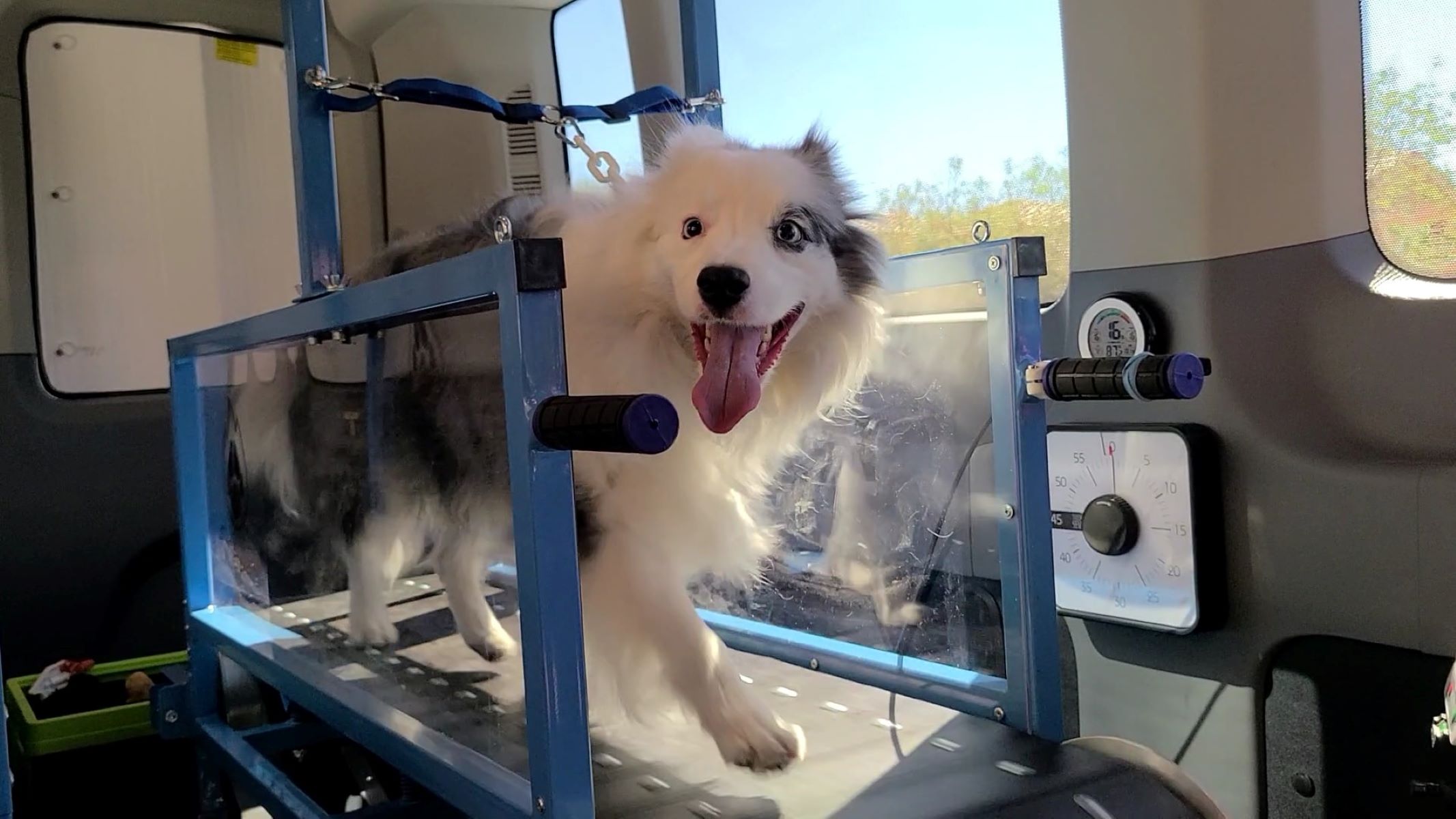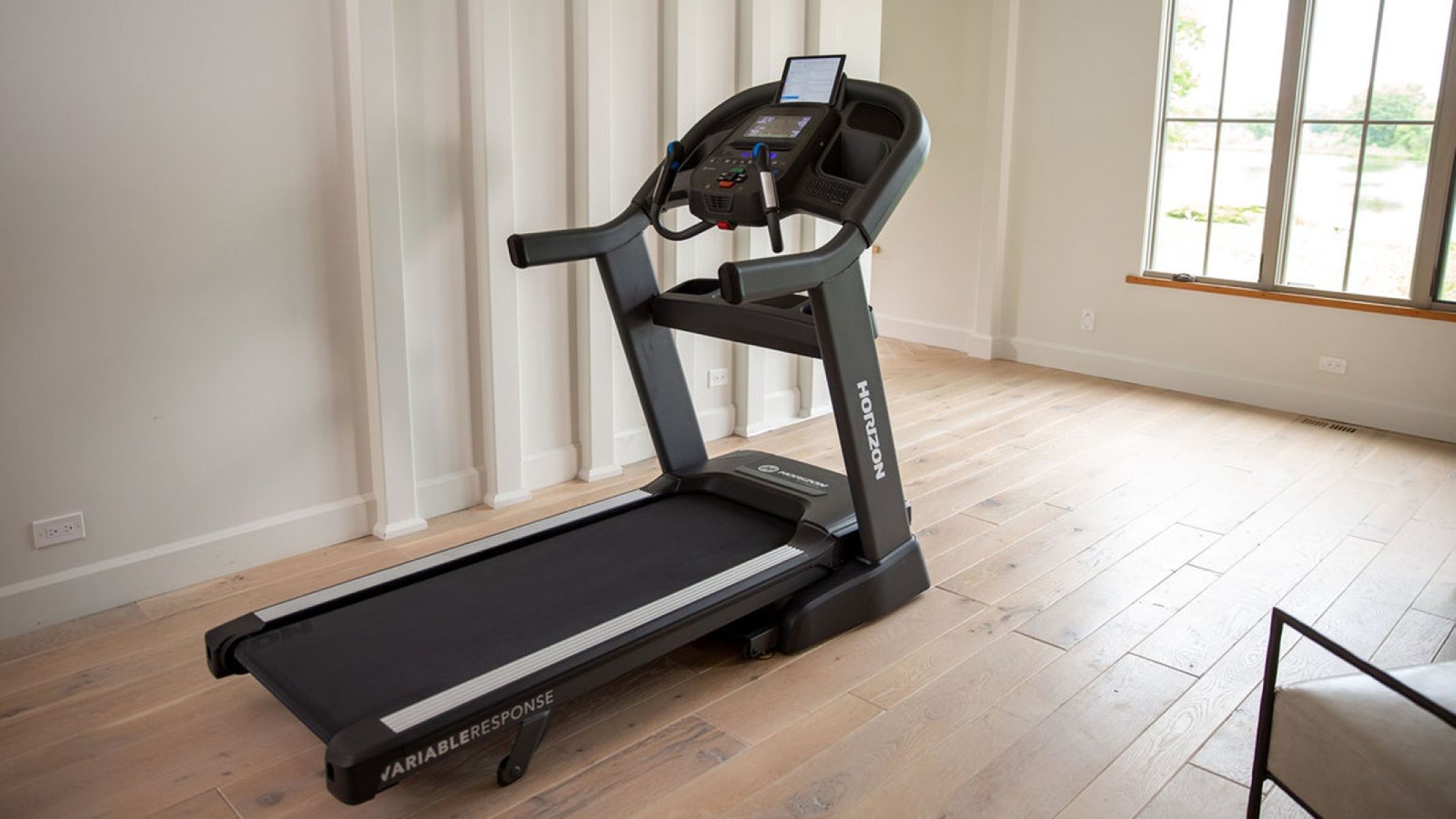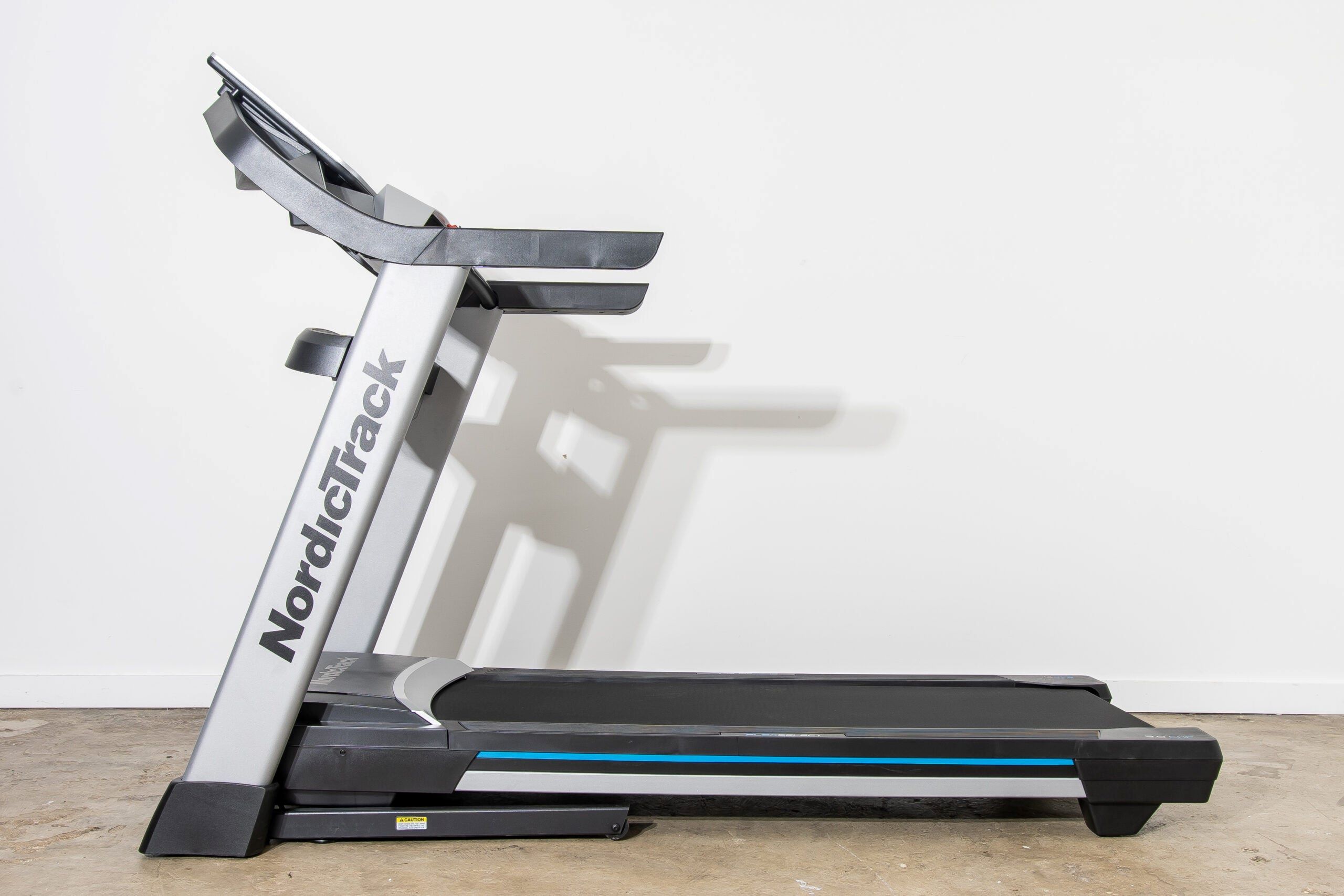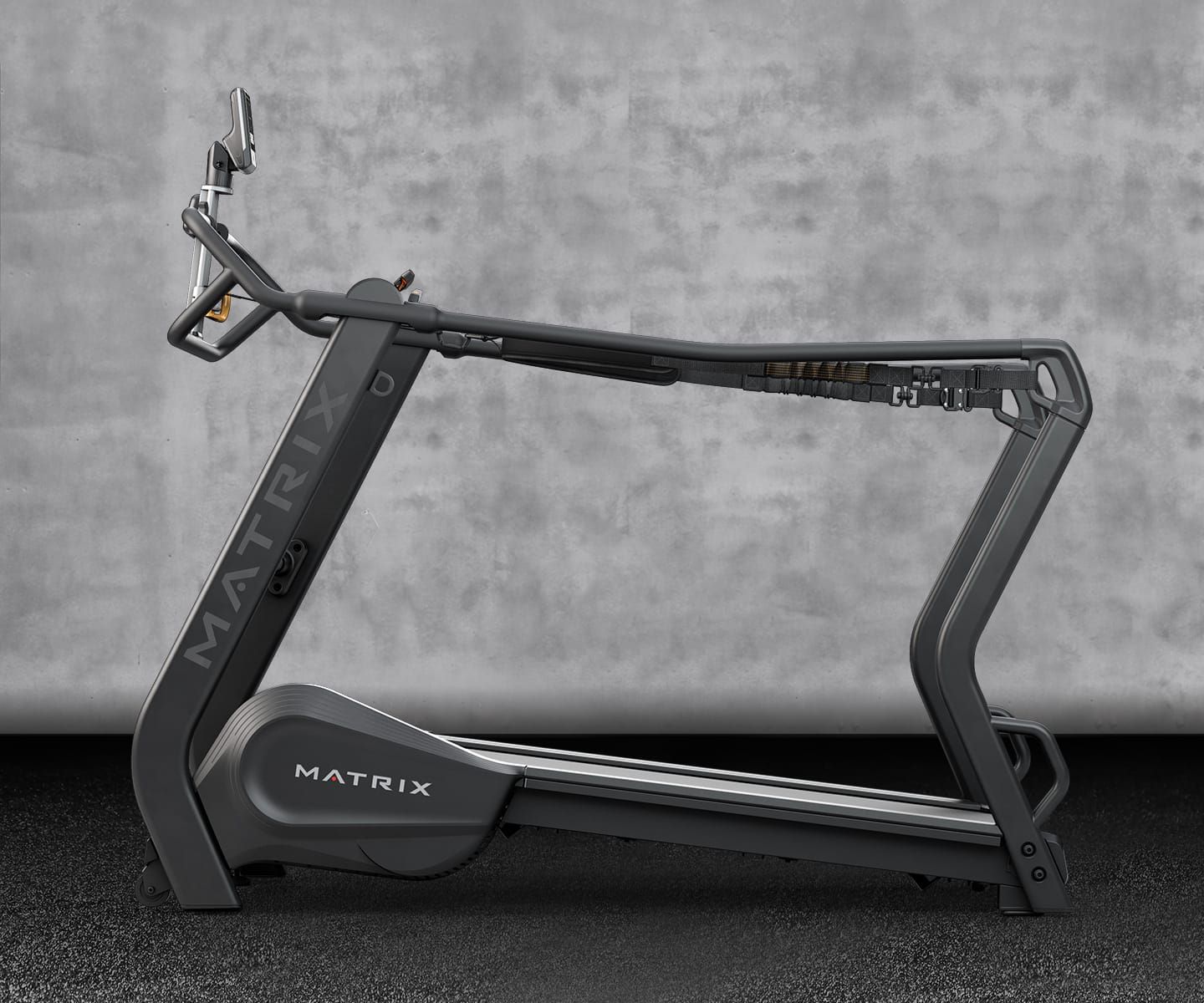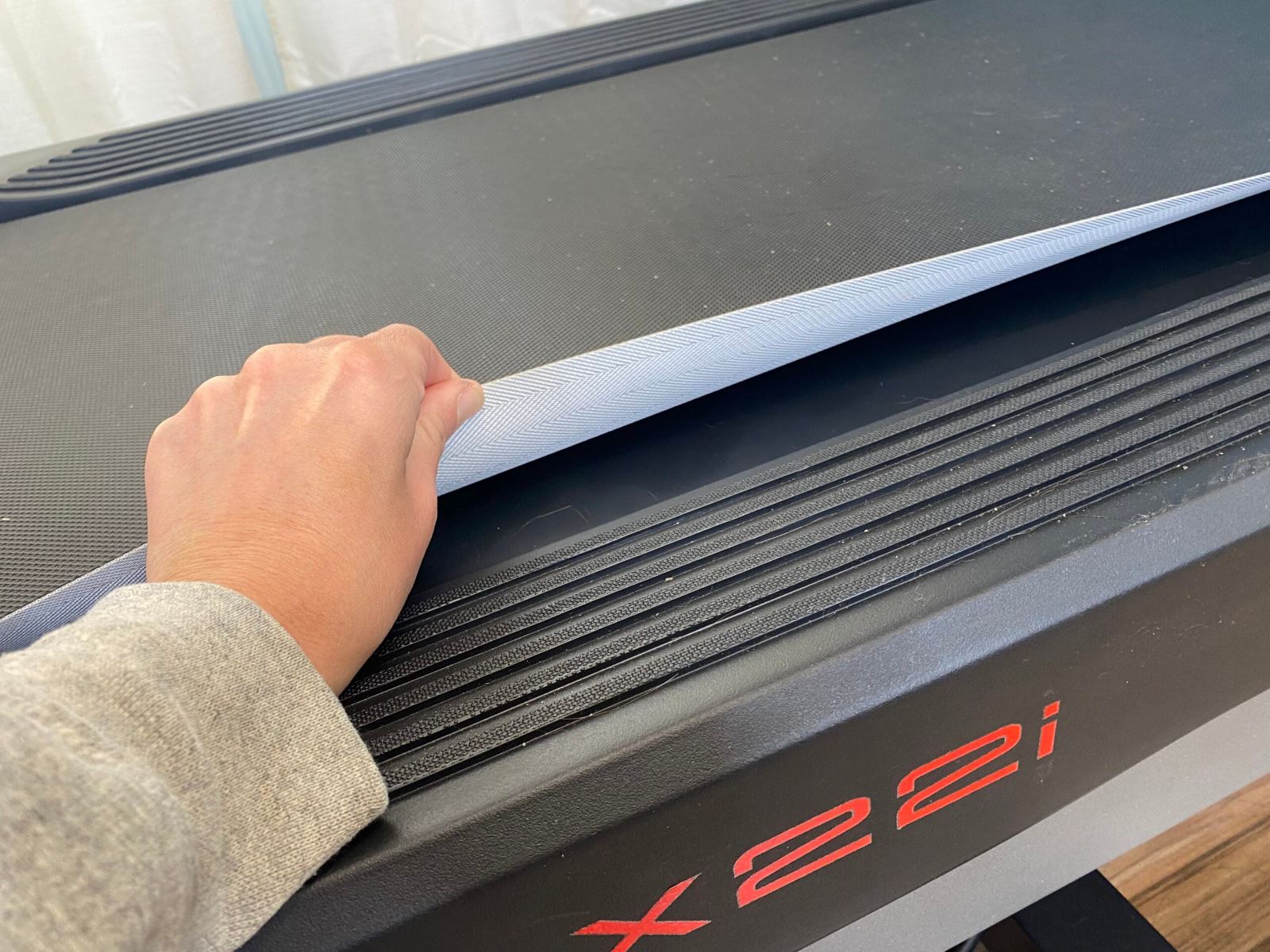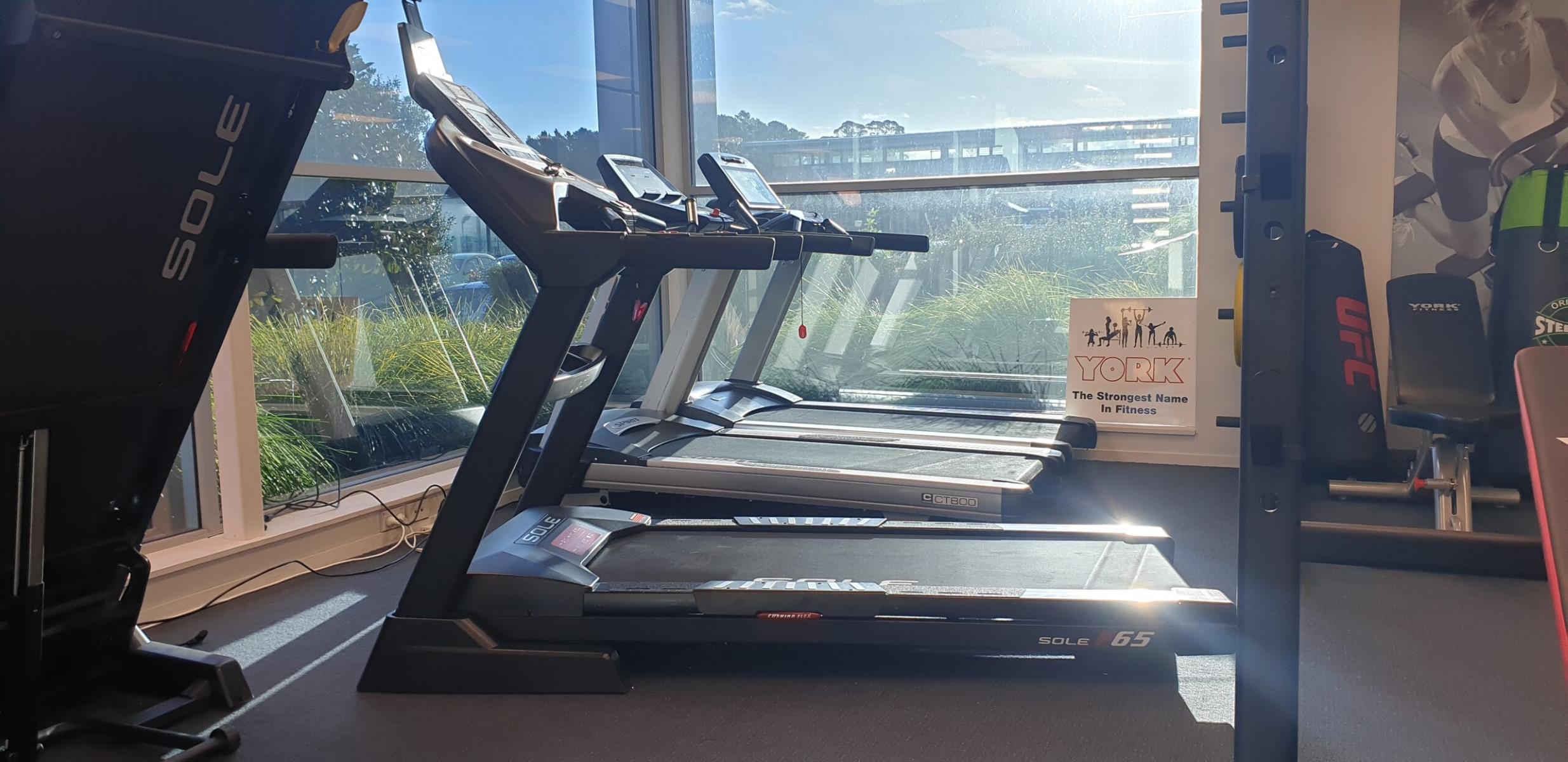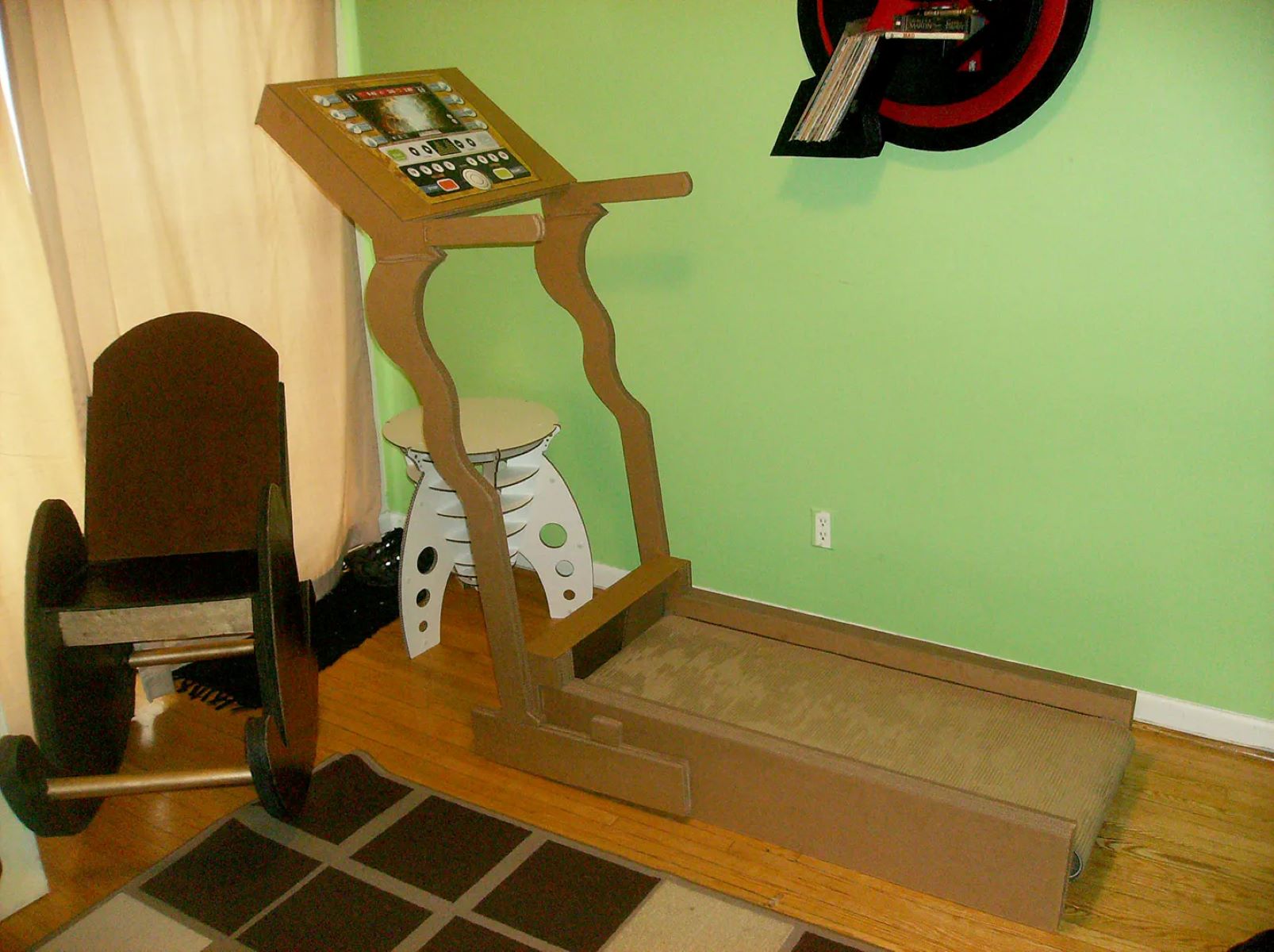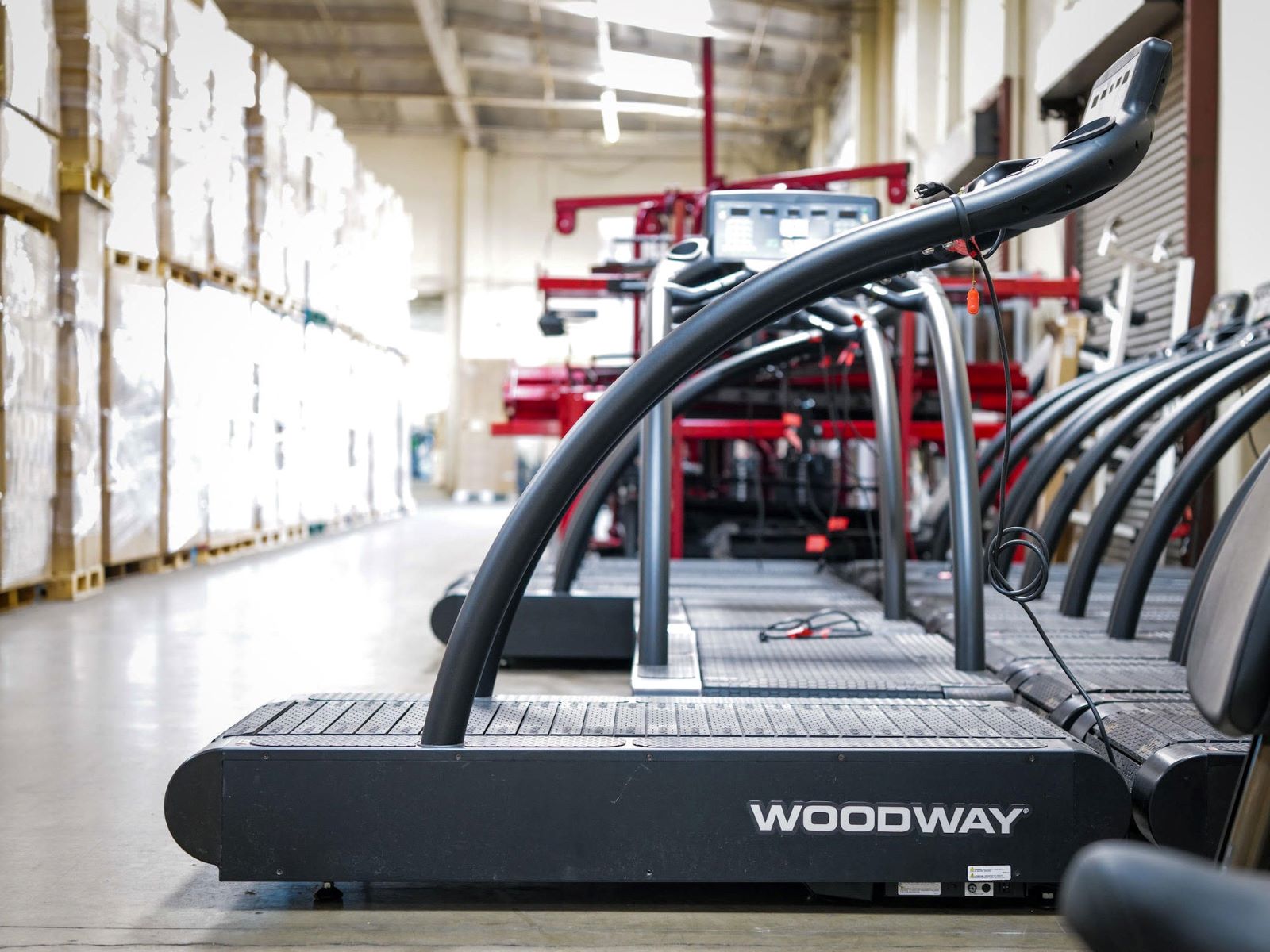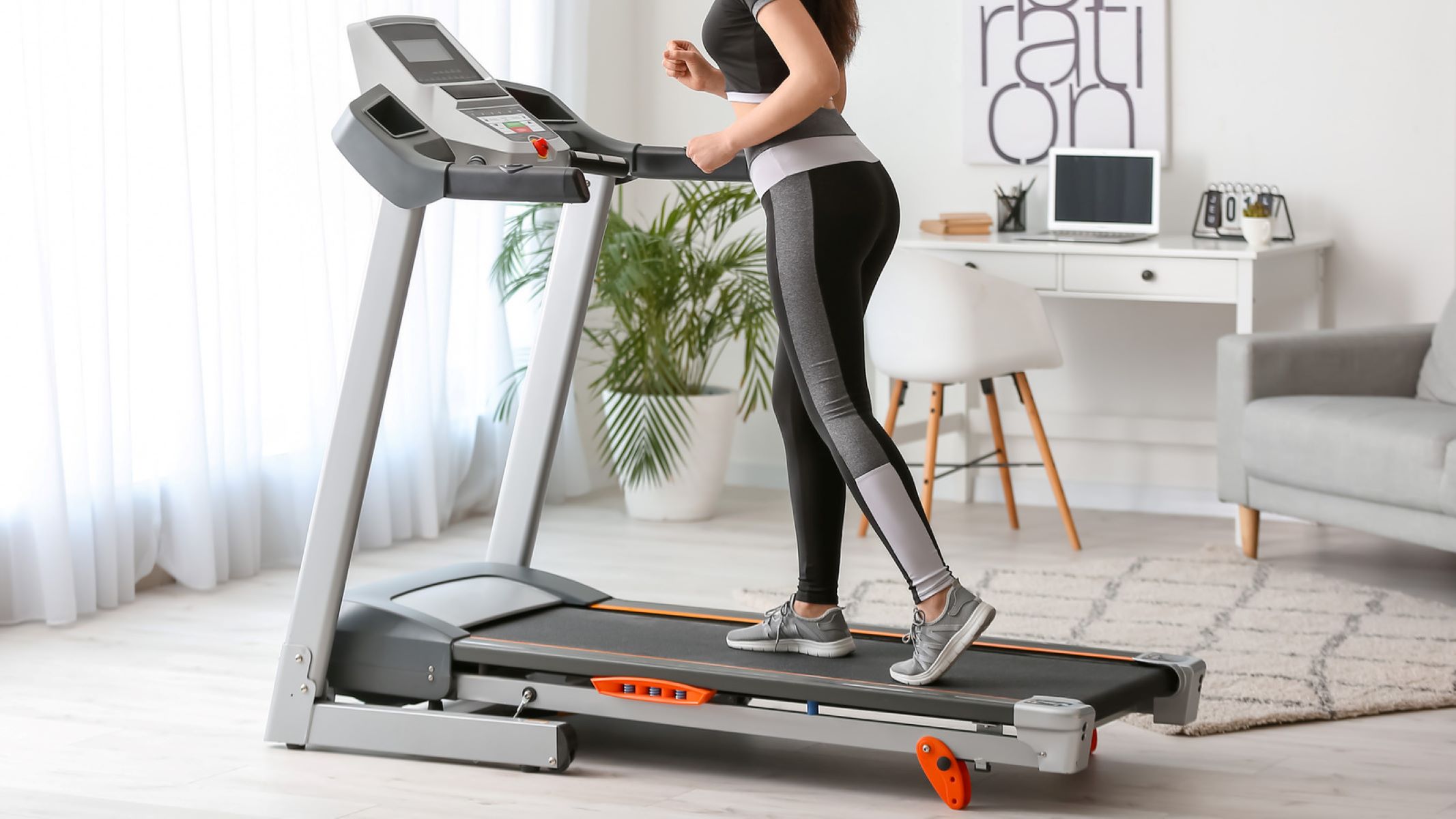Home>Misc>Featured>Why Does My Treadmill Make Clicking Noise When Running


Featured
Why Does My Treadmill Make Clicking Noise When Running
Modified: October 25, 2023
Featured treadmill making clicking noise while running. Don't let the noise ruin your workout experience. Find out the possible causes and solutions now.
Introduction
A treadmill is a popular piece of exercise equipment used by many individuals to stay in shape and maintain an active lifestyle. However, it can be quite frustrating when you start hearing a clicking noise while using your treadmill. This noise not only interrupts your workout, but it may also be indicative of a larger problem that needs to be addressed.
Understanding the common causes of clicking noises on treadmills can help you diagnose and troubleshoot the issue effectively. This article will outline some of the most common causes of clicking noises on treadmills and provide potential solutions to eliminate the annoying sound.
It is important to note that while this article provides some general steps for troubleshooting and resolving clicking noises on treadmills, it is always recommended to consult the manufacturer’s manual or seek professional assistance if you are unsure or uncomfortable performing any repairs or maintenance tasks.
With that in mind, let’s dive into the common causes of clicking noises on treadmills and how to address them.
Common Causes of Clicking Noises on Treadmills
When you start hearing a clicking noise on your treadmill, it’s important to identify the root cause before attempting any repairs. Here are some common causes of clicking noises on treadmills:
- Loose or Worn Belt: A loose or worn belt can cause a clicking noise as it slips or rubs against the treadmill deck. Over time, the belt may become misaligned or stretched, resulting in the clicking sound. Inspect the belt for any signs of wear or looseness.
- Debris or Foreign Objects: Sometimes, small debris or foreign objects such as rocks, dirt, or even pieces of clothing may get trapped in the treadmill’s chassis or under the belt. These objects can cause clicking noises when they come into contact with the moving parts.
- Worn-out Rollers: The rollers on a treadmill are responsible for keeping the belt aligned and moving smoothly. If the rollers become worn or damaged, they can create a clicking noise as the belt moves over them. Inspect the rollers for any signs of wear or friction.
- Loose Screws and Bolts: Treadmills have various screws and bolts that hold the frame and components together. Over time, these screws and bolts can loosen due to vibration and continuous use, resulting in a clicking noise. Check for any loose screws or bolts and tighten them if necessary.
- Motor Issues: Clicking noises can also stem from problems with the treadmill’s motor. If the motor bearings are worn or damaged, they may produce a clicking sound as the motor rotates. Additionally, loose wiring or faulty motor brushes can also contribute to the clicking noise.
These are just some of the common causes of clicking noises on treadmills. Identifying the specific cause will help you determine the most appropriate troubleshooting steps and solutions to resolve the issue effectively.
Diagnosis and Troubleshooting Steps
Diagnosing and troubleshooting clicking noises on your treadmill involves a systematic approach to identify and address the underlying issue. Here are some steps you can follow to diagnose and troubleshoot the problem:
1. Checking for Loose or Worn Parts
Start by inspecting the treadmill for any loose or worn-out parts. Check the belt tension and alignment to ensure it is properly positioned on the rollers. Examine the frame, screws, and bolts for any signs of looseness. If you find any loose or worn parts, tighten or replace them as needed.
2. Lubricating the Belt
If the clicking noise persists after checking for loose or worn parts, it might be due to insufficient lubrication of the belt. Refer to the manufacturer’s instructions for the appropriate lubrication method and apply lubricant to the underside of the belt. This will help reduce friction and minimize the clicking sound.
3. Examining the Motor
Inspect the treadmill’s motor for any visible damage or loose wiring. Ensure that the motor is securely mounted and the electrical connections are intact. If you notice any issues with the motor, such as worn brushes or faulty bearings, consider contacting a professional for repair or replacement.
4. Inspecting the Rollers
Carefully examine the rollers for signs of wear or damage. If the rollers are worn-out or misaligned, they can cause the belt to slip or create a clicking noise. Consider replacing the rollers if they are worn, and ensure they are properly aligned with the treadmill belt.
5. Tightening Loose Screws and Bolts
Check all screws and bolts on the treadmill for tightness. Use a screwdriver or wrench to tighten any loose fasteners. Be cautious not to overtighten, as this can strip the threads or cause damage. Properly securing the screws and bolts will eliminate any potential clicking noises caused by loose parts.
6. Checking the Pulley System
Inspect the treadmill’s pulley system, including the pulleys, belts, and tensioners. Look for any signs of wear or misalignment. If any components are damaged or out of place, consider replacing them to eliminate the clicking noise.
By following these diagnosis and troubleshooting steps, you can effectively identify and resolve the underlying issue causing the clicking noise on your treadmill. However, if the problem persists or you are unsure about performing any repairs, it is always advisable to seek professional assistance.
Checking for Loose or Worn Parts
One of the first steps in diagnosing and troubleshooting clicking noises on a treadmill is to check for loose or worn parts. Over time, the constant movement and vibrations from regular use can cause various components to become loose or worn out, resulting in a clicking sound. Here are some areas to inspect:
- Belt Tension and Alignment: Start by examining the treadmill belt tension and alignment. A loose or misaligned belt can create clicking noises as it slips or rubs against the treadmill deck. Ensure that the belt is properly tensioned and aligned according to the manufacturer’s guidelines.
- Frame, Screws, and Bolts: Carefully inspect the treadmill frame, including all screws and bolts. Check for any signs of looseness or damage. Tighten any loose screws or bolts using the appropriate tools. It’s important to ensure that the frame is stable and secure to eliminate any potential causes of clicking noises.
- Roller Bearings: The rollers on a treadmill play a crucial role in keeping the belt aligned and moving smoothly. Over time, the roller bearings may become worn or damaged, causing a clicking noise. Gently rotate the rollers to feel for any roughness or grinding sensations. If you detect any issues, consider replacing the roller bearings.
- Deck and Stabilizer Components: Inspect the treadmill deck and stabilizer components for any signs of wear or damage. Look for cracks, warping, or excessive wear on the deck. Check the stabilizer components, such as the incline system or shock absorbers, for any loose or worn parts. Replace any damaged or worn-out components as necessary.
- Pulse Sensors: If your treadmill is equipped with pulse sensors, ensure that they are firmly attached and properly aligned with your hands or wrists when in use. Loose or misaligned pulse sensors can create clicking noises as they vibrate against the frame. Adjust or tighten the sensors if needed.
By thoroughly checking for any loose or worn parts, you can address the potential sources of clicking noises on your treadmill. However, always refer to the manufacturer’s manual for specific instructions on inspecting and maintaining your treadmill model.
Lubricating the Belt
Lubricating the belt is an essential maintenance task that can help eliminate clicking noises on a treadmill. Over time, the belt can become dry and cause friction against the deck, resulting in a clicking sound. Here’s how you can properly lubricate the belt:
- Refer to the Manufacturer’s Manual: Consult the manufacturer’s manual or documentation specific to your treadmill model. It should provide instructions on the type of lubricant to use and the recommended schedule for lubrication.
- Prepare the Treadmill: Before applying lubricant, first, unplug the treadmill from the power source and make sure it is completely turned off. It’s also a good idea to place a protective mat or towel around the treadmill to catch any excess lubricant and prevent it from dripping onto the floor.
- Clean the Belt: Use a clean cloth or towel to wipe down the treadmill belt and remove any dust, dirt, or debris. This will help ensure proper adhesion and application of the lubricant.
- Apply the Lubricant: Following the manufacturer’s recommendations, apply the lubricant to the underside of the treadmill belt. Use a spray bottle or apply the lubricant directly to the cloth and evenly distribute it along the length of the belt. Be cautious not to over-lubricate, as excess lubricant can lead to slippery conditions and may affect the performance of the treadmill.
- Run the Treadmill: After applying the lubricant, turn on the treadmill and let it run at a low speed (around 1-2 miles per hour) for a few minutes. This allows the lubricant to spread evenly and ensures proper distribution across the belt and deck.
- Wipe Excess Lubricant: Once you’ve run the treadmill for a few minutes, use a clean cloth or towel to wipe off any excess lubricant that may have dripped or accumulated on the belt or deck. This helps prevent any slippery surfaces and ensures a safe workout experience.
Lubricating the belt regularly can help minimize friction, reduce noise, and extend the lifespan of your treadmill. Follow the recommended lubrication schedule provided by the manufacturer to maintain optimal performance and prevent clicking noises.
Examining the Motor
The motor is a crucial component of your treadmill and can be a potential source of clicking noises. By examining the motor, you can identify any issues that may be causing the noise. Here’s how you can properly examine the treadmill motor:
- Power Off and Unplug: Before inspecting the motor, ensure that the treadmill is completely turned off and unplugged from the power source for safety.
- Visual Inspection: Carefully examine the motor for any visible signs of damage, such as cracks, loose wires, or burned-out components. Look for loose connections and ensure that all wires and cables are securely attached.
- Bearings: The motor bearings play a vital role in the smooth operation of the treadmill. If the bearings are worn or damaged, they can cause clicking noises as the motor rotates. Gently rotate the motor shaft by hand and listen for any abnormal sounds or feel for any roughness. If you detect any issues, it may be necessary to replace the worn bearings.
- Motor Brushes: Inspect the motor brushes for any signs of wear. These small carbon brushes make contact with the motor’s commutator and can wear down over time. Worn brushes can create clicking noises and may require replacement. Refer to the manufacturer’s manual for instructions on how to inspect and replace the motor brushes if necessary.
- Tension and Alignment: Ensure that the motor is properly tensioned and aligned with the drive belt. A misaligned or loose motor can cause clicking sounds. Carefully adjust and align the motor according to the manufacturer’s guidelines to eliminate any potential sources of noise.
- Professional Inspection: If you are unsure about examining the motor or if you suspect a more serious issue, it is recommended to seek professional assistance. Professional technicians have the expertise and tools to diagnose and repair motor-related problems.
By examining the motor, you can identify and address any potential issues that may be causing the clicking noise on your treadmill. However, always prioritize safety and consult the manufacturer’s manual for specific instructions related to your treadmill model.
Inspecting the Rollers
The rollers on a treadmill help to keep the belt aligned and moving smoothly. If the rollers become worn or damaged, they can create clicking noises during operation. Here are the steps to properly inspect the rollers:
- Power Off and Unplug: Before inspecting the rollers, make sure the treadmill is turned off and unplugged from the power source for safety.
- Visual Inspection: Carefully examine the rollers for any visible signs of wear or damage. Look for cracks, flat spots, or uneven surfaces. Pay attention to the roller bearings and ensure they are intact and functioning properly.
- Rotate the Rollers: Gently rotate each roller by hand to feel for any roughness or grinding sensations. The rollers should spin smoothly without any resistance or abnormal noise. If you detect any issues, such as rough or inconsistent rotation, it may indicate worn-out bearings or misalignment.
- Belt Alignment: If the belt is not properly aligned on the rollers, it can cause clicking noises. Check the alignment of the belt by visually inspecting its position on the rollers. Ensure it is centered and evenly positioned across the entire width of the rollers.
- Clean the Rollers: Use a clean cloth or towel to wipe down the rollers and remove any dust, dirt, or debris. Accumulated debris can cause friction and contribute to clicking noises. Wipe the rollers thoroughly to ensure smooth and unobstructed movement.
- Roller Replacement: If you notice significant wear, damage, or persistent clicking noises even after cleaning and aligning the rollers, it may be necessary to replace them. Consult the manufacturer’s manual or contact a professional technician for guidance on replacing treadmill rollers.
Properly inspecting the rollers and ensuring their smooth operation is crucial for eliminating clicking noises on your treadmill. Regular maintenance, such as cleaning and aligning the rollers, can help minimize wear and extend their lifespan. If you encounter any significant issues or are unsure about performing the inspection, it is recommended to seek professional assistance.
Tightening Loose Screws and Bolts
Loose screws and bolts are a common culprit for clicking noises on treadmills. The continuous vibrations and movement can cause these fasteners to gradually loosen over time. Here are the steps to properly tighten loose screws and bolts:
- Power Off and Unplug: Before tightening any screws or bolts, make sure the treadmill is turned off and unplugged from the power source for safety.
- Inspect the Treadmill: Carefully inspect the treadmill frame, console, and other components for any visible signs of loose screws or bolts. Pay close attention to areas where there may be connecting joints or fasteners.
- Gather the Proper Tools: Depending on the type of screws and bolts used on your treadmill, gather the appropriate tools such as a screwdriver, Allen wrench, or adjustable wrench to tighten the fasteners.
- Start with Loose Screws and Bolts: Begin by tightening any visibly loose screws or bolts. Use the proper tool and apply the required amount of force to securely tighten them. Be careful not to overtighten, as it may damage the threads or strip the fasteners.
- Check Hidden Screws and Bolts: Some screws and bolts may be hidden under covers, near the motor, or under the console. Carefully remove any necessary covers or panels to access these hidden fasteners. Inspect and tighten them if needed.
- Recheck and Test: After tightening all the loose screws and bolts, recheck the overall stability of the treadmill. Gently shake the frame to ensure that it feels sturdy and secure. Plug in the treadmill and test it at a low speed to verify that the clicking noise has been eliminated.
Tightening loose screws and bolts is a simple yet effective way to eliminate clicking noises on your treadmill. Regularly inspecting and tightening these fasteners can prevent further issues and ensure a smooth and quiet workout experience. If you encounter any difficulties or are unsure about performing the task, it is advisable to consult the manufacturer’s manual or contact a professional for assistance.
Checking the Pulley System
The pulley system of a treadmill is responsible for transferring power from the motor to the belt, allowing for smooth movement during workouts. If there are issues with the pulley system, it can result in clicking noises. Here are the steps to properly check the pulley system:
- Power Off and Unplug: Before inspecting the pulley system, ensure that the treadmill is turned off and unplugged from the power source for safety.
- Visual Inspection: Examine the pulleys, drive belt, and tensioners for any signs of wear, damage, or misalignment. Look for cracks, fraying, or improper positioning of these components. Any abnormalities in the pulley system can contribute to clicking noises.
- Belt Tension: Check the tension of the drive belt by pressing down on it with your finger. It should have some tension but still be able to move slightly. If the belt is too loose or too tight, it can cause clicking noises. Adjust the tension according to the manufacturer’s guidelines.
- Pulley Alignment: Ensure that the pulleys are properly aligned with each other and with the drive belt. Misaligned pulleys can create clicking sounds as the belt moves over them. Align the pulleys according to the manufacturer’s instructions to eliminate any potential sources of noise.
- Tensioner Adjustment: If your treadmill has tensioners, check them for any signs of wear or damage. A faulty tensioner can cause the drive belt to slip or create clicking noises. Adjust or replace the tensioner if necessary to restore proper tension and alignment.
- Clean and Lubricate: Remove any debris or dirt from the pulley system using a clean cloth or brush. Lubricate the pulleys and tensioners as recommended by the manufacturer to ensure smooth movement and reduce friction that could contribute to clicking noises.
- Professional Assistance: If you are unsure about the condition or proper functioning of the pulley system, or if you cannot resolve the clicking noise after inspection and adjustments, it is recommended to seek professional assistance. A qualified technician can provide a thorough diagnosis and repair any issues with the pulley system.
By checking the pulley system and ensuring proper alignment, tension, and lubrication, you can help eliminate clicking noises on your treadmill. Regular maintenance and inspection of the pulley system can help prolong the lifespan of your treadmill and ensure optimal performance during your workouts.
Potential Solutions for Clicking Noises
When it comes to addressing clicking noises on your treadmill, there are several potential solutions, depending on the underlying cause. Here are three common solutions that can help resolve the issue:
1. Tightening Loose Parts
If the clicking noise is caused by loose screws, bolts, or other fasteners, the solution is to tighten them. Carefully inspect the treadmill for any visible signs of loose parts and use the appropriate tools to tighten them. By ensuring that all components are securely fastened, you can eliminate the clicking sound caused by movement or vibration.
2. Replacing Worn-out Components
If the clicking noise persists after checking for loose parts, it may be necessary to replace worn-out components. This could include the drive belt, rollers, motor brushes, or even the entire pulley system. By replacing these worn-out parts, you can restore proper functionality and eliminate the clicking noise. It is recommended to consult the manufacturer’s manual or seek professional assistance to ensure the correct replacement parts are used.
3. Professional Repair or Maintenance Services
If you are unable to diagnose the cause of the clicking noise or if the issue persists despite your attempts at troubleshooting, it is advisable to seek professional repair or maintenance services. Professional technicians have the knowledge, expertise, and specialized tools to identify and resolve the issue effectively. They can perform a thorough inspection of the treadmill, diagnose the problem, and provide the necessary repairs or maintenance to eliminate the clicking noise.
Remember, it’s important to prioritize safety and consult the manufacturer’s manual or contact the treadmill’s customer support for guidance specific to your model. If you are unsure or uncomfortable performing any repairs or maintenance tasks, it is always recommended to seek professional assistance.
By implementing these potential solutions, you can tackle clicking noises on your treadmill effectively and ensure a quiet and enjoyable workout experience.
Tightening Loose Parts
One of the first and simplest steps in addressing clicking noises on your treadmill is to check for and tighten any loose parts. Continuous use and vibrations can cause screws, bolts, and other fasteners to become loose over time, resulting in disruptive clicking sounds. Here’s how to tighten loose parts:
- Power Off and Unplug: Before attempting any repairs, make sure to turn off the treadmill and unplug it from the power source for safety.
- Visual Inspection: Thoroughly examine the treadmill for any visible signs of loose parts. Check the frame, console, handrails, and any other components for loose screws, bolts, or connectors. Look for any gaps or areas where movement may create clicking noises.
- Use the Correct Tools: Gather the appropriate tools, depending on the type of fasteners used in your treadmill. This may include screwdrivers, wrenches, or an Allen key set. Using the correct tools will ensure proper tightening and prevent damage to the fasteners.
- Tighten Loose Fasteners: Carefully tighten any loose screws, bolts, or connectors you identified during the visual inspection. Use the appropriate tool to apply the necessary force but avoid over-tightening, as this can cause damage. Pay close attention to areas where clicking sounds were most noticeable.
- Recheck Stability: After tightening the loose parts, gently shake the treadmill to ensure that the frame feels stable and secure. Test the treadmill at a low speed to see if the clicking noise has been eliminated. If the noise persists, proceed to further troubleshooting steps.
By systematically checking for loose parts and properly tightening them, you can often eliminate clicking noises on your treadmill. However, always refer to the manufacturer’s manual for guidance on specific components and tightening instructions for your particular treadmill model.
Replacing Worn-out Components
If tightening loose parts doesn’t resolve the clicking noise on your treadmill, it is possible that worn-out components are causing the issue. Over time, certain parts of the treadmill may become worn or damaged, leading to disruptive clicking sounds. Here’s how you can address this:
- Identify the Worn-out Components: Conduct a thorough inspection of your treadmill to identify any worn-out components. Common parts that may need replacement include the drive belt, rollers, motor brushes, or even the entire pulley system. Look for signs of wear, such as cracks, fraying, or uneven surfaces.
- Consult the Manufacturer’s Manual: Refer to the manufacturer’s manual or contact the treadmill’s customer support to identify the correct replacement parts for your specific model. They can provide guidance on where to purchase the parts and instructions on how to properly replace them.
- Follow Proper Replacement Procedures: Carefully follow the manufacturer’s instructions for replacing the worn-out components. This may involve removing covers, disconnecting electrical connections, or using specific tools. Take note of any precautions or safety measures mentioned in the manual.
- Properly Install the Replacement Parts: Ensure that the replacement components are installed correctly and securely. Follow the instructions provided by the manufacturer to align and fasten the new parts properly. Improper installation can lead to further issues and may not resolve the clicking noise.
- Test the Treadmill: Once you have replaced the worn-out components, test the treadmill to see if the clicking noise has been resolved. Start at a low speed and gradually increase to your desired workout intensity. Pay close attention to any unusual sounds or vibrations. If the clicking noise persists, further troubleshooting or professional assistance may be required.
Replacing worn-out components can significantly improve the performance of your treadmill and eliminate clicking noises. However, it is important to follow the manufacturer’s instructions and guidelines to ensure safe and proper replacement. If you are unsure or uncomfortable with the process, it is recommended to seek professional assistance to avoid any damage to the treadmill or potential injuries.
Professional Repair or Maintenance Services
If tightening loose parts or replacing worn-out components hasn’t resolved the clicking noise on your treadmill, it may be time to seek professional repair or maintenance services. Professional technicians have the expertise and specialized knowledge to diagnose and address more complex issues. Here’s how professional services can help:
- Thorough Diagnosis: Professional technicians have the skills to perform a comprehensive diagnosis of your treadmill. They can identify the specific cause of the clicking noise, whether it’s related to electrical components, the motor, the pulley system, or other mechanical parts.
- Expertise and Equipment: Professional technicians have access to specialized tools and equipment specifically designed for treadmill repairs. They are familiar with the intricacies of different treadmill models and can efficiently troubleshoot and resolve the issues contributing to the clicking noise.
- Correct and Reliable Repairs: By entrusting your treadmill to experienced professionals, you can be confident that the repairs will be carried out accurately and effectively. They have the knowledge and resources to replace faulty parts, adjust alignments, and address any underlying issues properly.
- Preventive Maintenance: In addition to fixing the clicking noise, professional technicians can also provide routine maintenance services to keep your treadmill in optimal condition. Regular maintenance can prevent future issues, prolong the lifespan of your treadmill, and ensure a smooth and quiet workout experience.
- Manufacturer Support: Professional repair services often have direct access to manufacturer support and guidance. They can consult with the manufacturer to obtain specific instructions or technical assistance in resolving the clicking noise more effectively.
- Safety and Warranty Considerations: Seeking professional repair or maintenance services can help maintain the warranty on your treadmill, as unauthorized repairs may void the warranty. Moreover, professionals prioritize safety and adhere to industry standards, minimizing the risk of accidents or further damage to the treadmill.
If you are unsure about the cause of the clicking noise or if your attempts at troubleshooting haven’t been successful, it is recommended to contact a reputable treadmill repair service. They can assess the situation, provide an accurate diagnosis, and offer the most suitable solutions to eliminate the clicking noise and restore the functionality of your treadmill.
Conclusion
Dealing with a clicking noise on your treadmill can be frustrating, but with the right knowledge and approach, you can identify and resolve the issue. Start by diagnosing the problem, checking for loose or worn parts, and performing basic troubleshooting steps. Tightening loose parts, lubricating the belt, examining the motor, inspecting the rollers, and checking the pulley system are all important troubleshooting steps to address the clicking noise.
If these steps don’t resolve the issue, it may be necessary to replace worn-out components or seek professional repair and maintenance services. Professional technicians have the expertise, diagnostic tools, and resources to identify and fix more complex issues. They can provide thorough diagnostics, carry out correct repairs, and offer preventive maintenance to keep your treadmill in optimal condition.
Always refer to the manufacturer’s manual for specific instructions and guidelines related to your treadmill model. Prioritize safety by following proper procedures, and if you are unsure or uncomfortable with any repairs, it is best to seek professional assistance.
By taking the necessary steps to address clicking noises on your treadmill, you can ensure a quiet and enjoyable workout experience. Regular maintenance and proper care will help extend the lifespan of your treadmill and keep it running smoothly for years to come.
